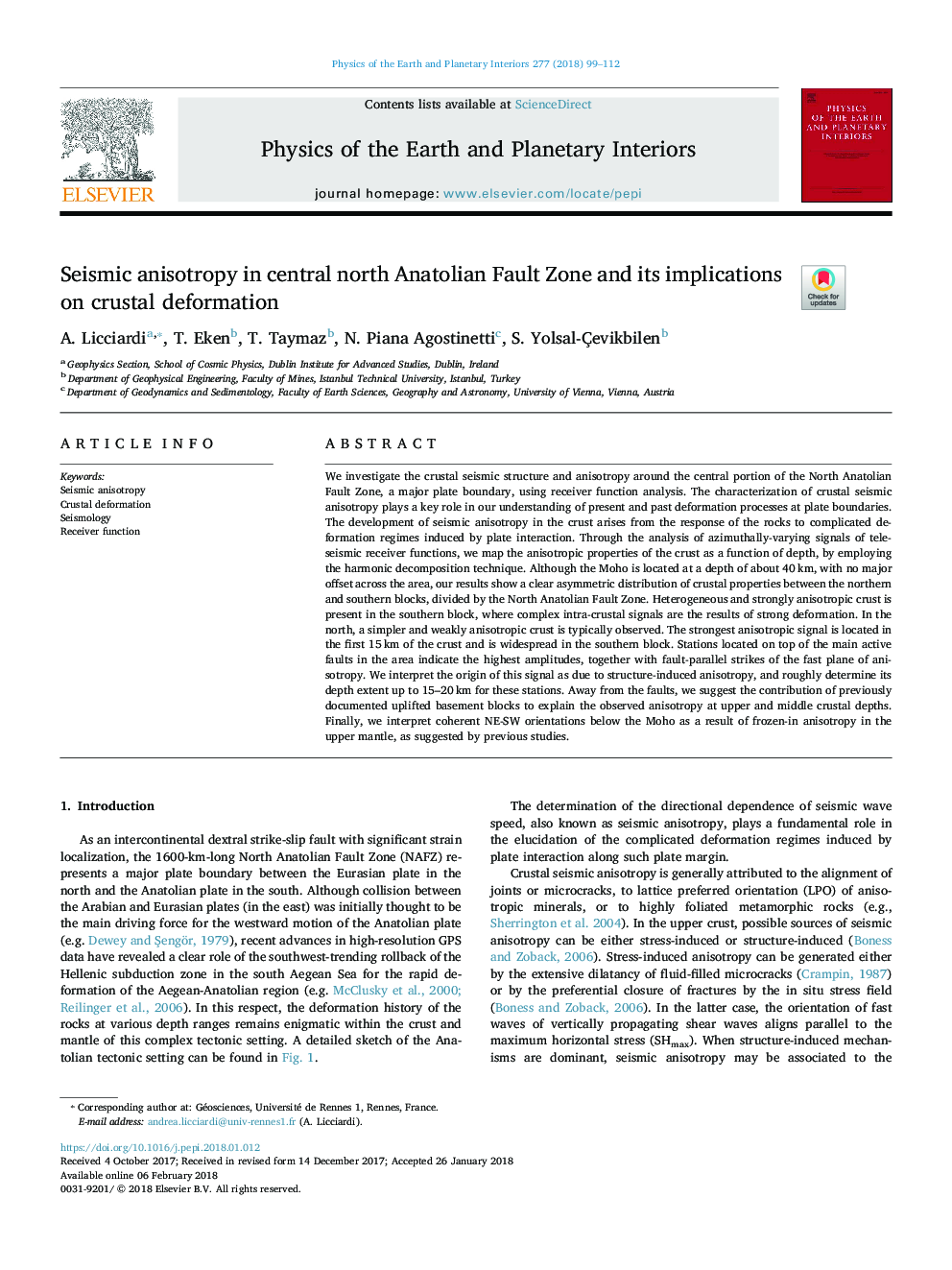| کد مقاله | کد نشریه | سال انتشار | مقاله انگلیسی | نسخه تمام متن |
|---|---|---|---|---|
| 8915713 | 1641463 | 2018 | 14 صفحه PDF | دانلود رایگان |
عنوان انگلیسی مقاله ISI
Seismic anisotropy in central North Anatolian Fault Zone and its implications on crustal deformation
دانلود مقاله + سفارش ترجمه
دانلود مقاله ISI انگلیسی
رایگان برای ایرانیان
کلمات کلیدی
موضوعات مرتبط
مهندسی و علوم پایه
علوم زمین و سیارات
فیزیک زمین (ژئو فیزیک)
پیش نمایش صفحه اول مقاله

چکیده انگلیسی
We investigate the crustal seismic structure and anisotropy around the central portion of the North Anatolian Fault Zone, a major plate boundary, using receiver function analysis. The characterization of crustal seismic anisotropy plays a key role in our understanding of present and past deformation processes at plate boundaries. The development of seismic anisotropy in the crust arises from the response of the rocks to complicated deformation regimes induced by plate interaction. Through the analysis of azimuthally-varying signals of teleseismic receiver functions, we map the anisotropic properties of the crust as a function of depth, by employing the harmonic decomposition technique. Although the Moho is located at a depth of about 40â¯km, with no major offset across the area, our results show a clear asymmetric distribution of crustal properties between the northern and southern blocks, divided by the North Anatolian Fault Zone. Heterogeneous and strongly anisotropic crust is present in the southern block, where complex intra-crustal signals are the results of strong deformation. In the north, a simpler and weakly anisotropic crust is typically observed. The strongest anisotropic signal is located in the first 15â¯km of the crust and is widespread in the southern block. Stations located on top of the main active faults in the area indicate the highest amplitudes, together with fault-parallel strikes of the fast plane of anisotropy. We interpret the origin of this signal as due to structure-induced anisotropy, and roughly determine its depth extent up to 15-20â¯km for these stations. Away from the faults, we suggest the contribution of previously documented uplifted basement blocks to explain the observed anisotropy at upper and middle crustal depths. Finally, we interpret coherent NE-SW orientations below the Moho as a result of frozen-in anisotropy in the upper mantle, as suggested by previous studies.
ناشر
Database: Elsevier - ScienceDirect (ساینس دایرکت)
Journal: Physics of the Earth and Planetary Interiors - Volume 277, April 2018, Pages 99-112
Journal: Physics of the Earth and Planetary Interiors - Volume 277, April 2018, Pages 99-112
نویسندگان
A. Licciardi, T. Eken, T. Taymaz, N. Piana Agostinetti, S. Yolsal-Ãevikbilen,